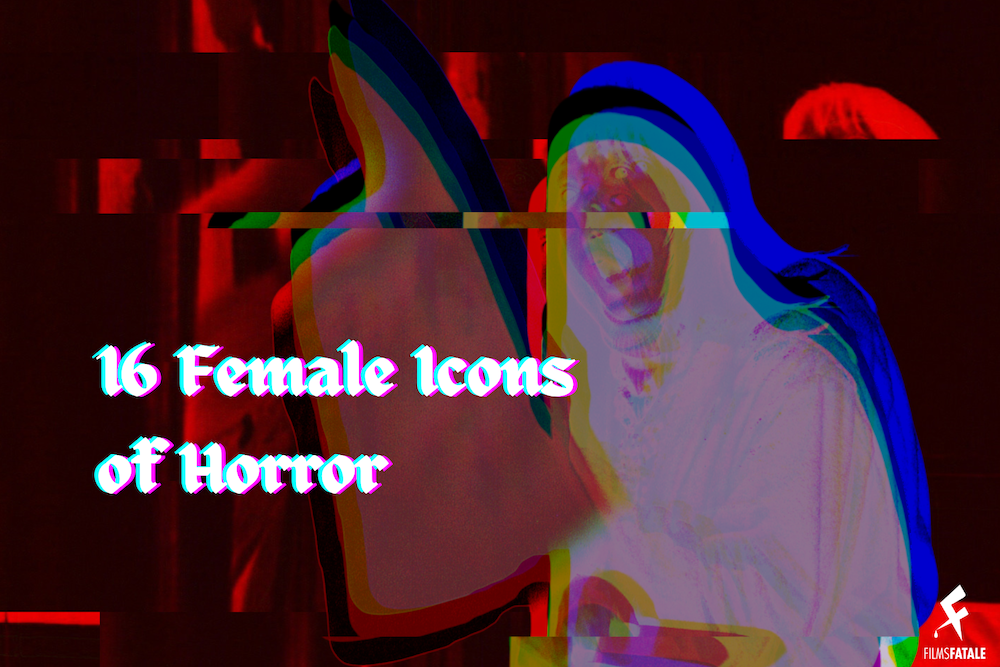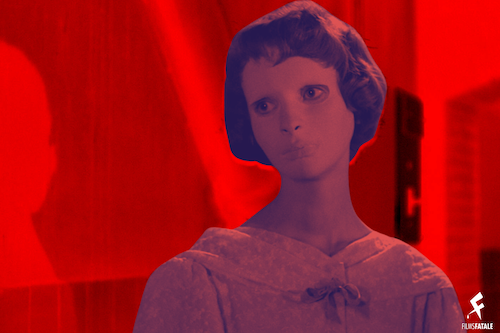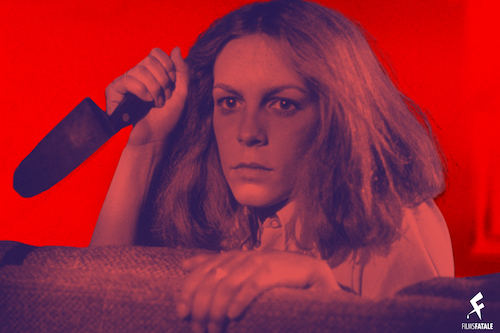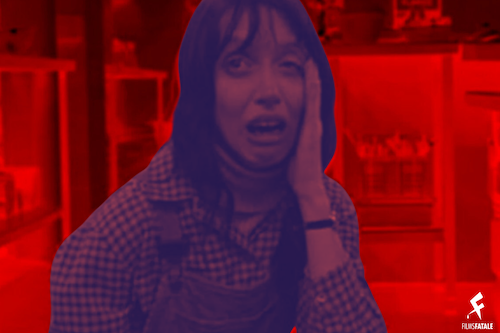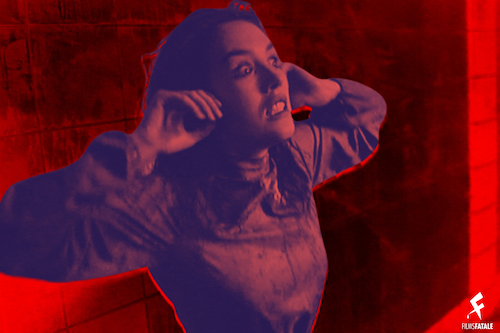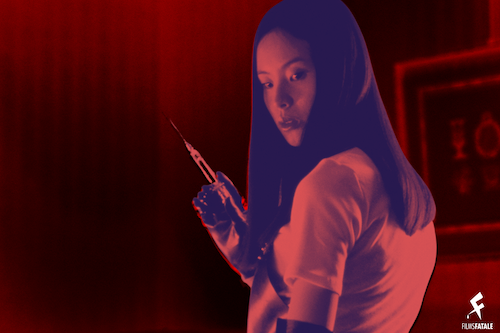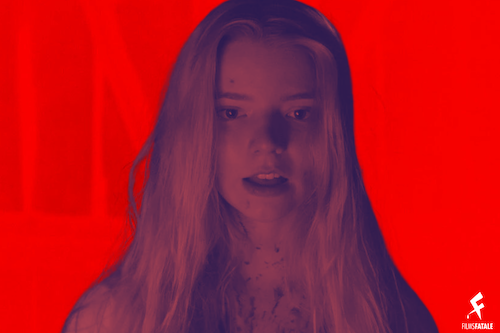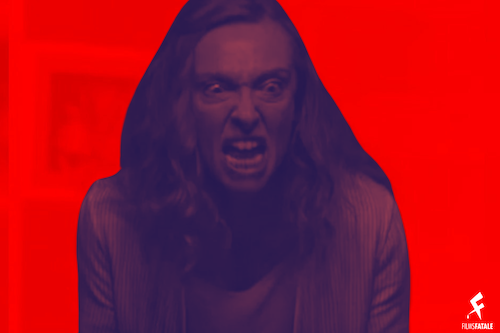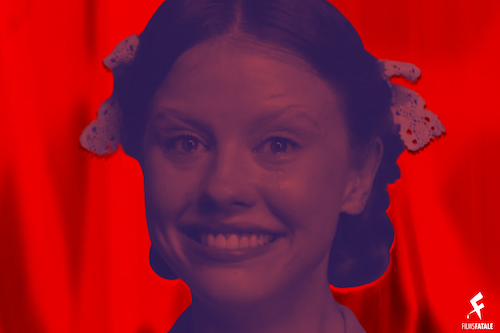16 Female Icons of Horror
Written by Andreas Babiolakis
You don’t need to rub your eyes any more clearer. We aren’t at Halloween yet, nor are we even close to the vicinity of spooky season. However, with the year round releases of horror films, and the imminent release of Ti West’s third part in his Maxine/Pearl trilogy, appropriately titled Maxxxine, I felt like it would be worthwhile to look back on the roles women have played in horror films. Sadly, it’s true: many works from this genre exploit and sexualize women and female characters, be they damsels in distress, objects of fantasy, or misogynist symbols. With West’s trilogy of films toeing the line between the stereotypical horror formula regarding the treatment of women and the complete subversion of these tired ways, it seemed necessary to appreciate the horror films that implemented female characters in far more interesting and important ways.
What this means is that I want to dive into the female characters, the amazing women who played them, and the importance these roles carry within their respective films, the horror genre, and cinematic history as a whole. Of course, sixteen (admittedly an odd number to cap this list off at, but having a six in there somewhere felt right at home regarding horror films, and six films is far too few, and going the other extreme feels impossible) isn’t a high enough number to honour every great, important female character in horror film history, but I’m hoping that this list provides enough of a spectrum to feel valid. Furthermore, these characters are presented in chronological order and nothing else. From the Golden Age of Hollywood up to the present, let us observe sixteen of the greatest female characters and performances in horror film history.
Note: Each entry will likely have spoilers. Reader discretion is advised.
The Monster’s Bride-Bride of Frankenstein (1935)
It goes without saying that the “bride” (or “?”, played by Elsa Lanchester) in James Whale’s masterful horror sequel, Bride of Frankenstein, is barely in the film that is named after her. Nonetheless, the build up to this major reveal in the final act leaves us in suspense. It is the shocking revelation that spins the film on its head: the bride rejects Dr. Frankenstein’s monster despite the countless hours put into making a “mate” for his previous creation. Representing both female autonomy, and the instilling of toxic masculinity (the insistence for the woman to be claimed by an intended man), the bride’s brief yet memorable moment is ingrained in our brains with her signature look, Frankenstein’s monster’s broken heart, and Whale’s further examinations of a male dominant society in full effect.
Marion Crane-Psycho (1960)
Alfred Hitchcock was sick and tired of the Hollywood system when he made Psycho and did everything in his power to go against the rulebook (down to forcing the first on-screen flushing of a toilet, as silly as this sounds). Part of this quest is having the apparent protagonist Marion (played by Janet Leigh) die roughly halfway through the motion picture: a twist that stunned audiences. Instead of dragging Marion around like a damsel to be saved, Hitchcock went the other extreme and made someone who felt very real, running away from her problems and right into danger. We mourn her once she is gone, feeling as though we’ve known her for years.
Christiane-Eyes Without a Face (1960)
Trapped by both society’s expectations that women have to be conventionally pretty and a father’s over obsession with a daughter he deems fragile, Christiane (Édith Scob) sports a mask for most of Eyes Without a Face and is withheld against her will in her doctor father’s mansion. It is dressed to be a paradise for her while her father prepares her a new face after a severe accident, but Christiane silently seeks a life of her own throughout this poetic horror picture. I’ll never shake off the bittersweet ending: one full of graphic horror and an eruption of freedom for Christiane.
Rosemary Woodhouse-Rosemary’s Baby (1968)
One could take the metaphors from Rosemary’s Baby in a handful of ways. You can see the cultish society forcing Rosemary Woodhouse (Mia Farrow) to have a baby for their rituals as a symbol of civilization’s persistence to make female citizens pregnant, even against their will. This is the complete oppression of women. Rosemary birthing the next coming of Satan can represent a mother feelings as though they failed (or that her body is not safe in this skewed, unfair society). However you want to read Rosemary’s Baby, I think we can all agree that the titular Rosemary is someone who our hearts bleed for; no one deserves to go through what she did. At the turn of the New Hollywood movement, there was Rosemary Woodhouse embodying the fact that not everyone gets that magical, motion picture ending.
Suzy Bannion-Suspiria (1977)
Typically, I find Dario Argento’s portrayal of women in his films to be a bit sacrificial. There’s a reason why Suzy (Jessica Harper) shines as the outlier of a haunted dance academy in Suspiria. It almost feels like she is the antithesis for the awful way things are run in this school as she fights against the supernatural curses that envelop her. Sure, Suspiria is a fever dream of a slasher film that embodies many of the genre’s typical traits, but Suzy is an endearing force that provides this film with a beating pulse.
Laurie Strode-Halloween (1978)
Daughter Jamie Lee Curtis followed in her mother Janet Leigh’s footsteps when she had her breakout performance in John Carpenter’s Halloween. Playing vulnerable but brave babysitter Laurie, Curtis and Carpenter turn who could have been a sitting duck into one of the horror genre’s greatest characters: an everyday civilian who stares into the eyes of danger and perseveres. That’s clearly all that she does seeing how many Halloween films have been released since, but the main focus is how bold Laurie is in the original film, as if Carpetner and Curtis channeled our inner thoughts when we imagine how we’d get out of the possibility of being murdered by a psychopath.
Ellen Ripley-Alien (1979)
It’s a bit too obvious now that Ellen Ripley (Sigourney Weaver) makes it out of the science fiction, horror masterpiece Alien alive, given how many sequels have been churned out since, but we mustn’t forget how special that original film is to horror and cinematic lore. Having a then unknown actor (and a female at that) outlive many major names while an extraterrestrial creature murders a space shuttle’s passengers one by one is a genius decision for its time. No one suspected that Ripley would outlast everyone else back then, and once people saw that she was the last survivor, they rooted for her escape with complete panic (relief would come soon enough). As sequels have shown, Ripley didn’t just go on to be one of cinema’s greatest badasses: she was one from the jump.
Wendy Torrance-The ShininG (1980)
Shame on all of us. The years Shelley Duvall endured the scrutiny of all for her performance as Wendy Torrance in Stanley Kubrick’s The Shining were damning and highly incorrect. What was once skewered as awful acting (enough to even be nominated for a Razzie for “Worst Actress”) is now recognized as some of the most authentic depictions of agony and horror put to the big screen. A delirious Duvall, at the hands of Kubrick’s unfavourable, problematic, tyrannical methods of wringing the performance he wanted out of her, is on full display in this psychological downward spiral. This performance, full of commitment and devotion, was derided as wooden and terrible, when Duvall couldn’t have delivered a more truthful performance in one of horror’s strongest titles.
Helen/Anna-Possession (1981)
My go-to choice for the greatest performance in horror film history will always be Isabelle Adjani as both Helen and Anna in Andrzej Żuławski’s cult classic Possession. Not only does Adjani showcase the entire spectrum of sanity in both these roles, she displays one of the most committed performances you’ll find in any motion picture: an extreme depiction of a possessed body and mind that most other actors could never pull off in this way. Representing the damning male gaze on women (as mothers, as partners, as ex wives, as free spirits, et cetera), Adjani leaves no stone unturned in this masterful, powerful performance.
Ronnie Quaife-The Fly (1986)
If there was ever a horror film that made me cry, it’s David Cronenberg’s magnum opus, The Fly. Geena Davis’ Ronnie is brilliant in helping evoke the common theme of the film: Seth Brundle is not a villain despite his mistakes and fatal accident. Ronnie helps us truly believe that we are watching a loved one wither away and die, all while she worries about her own autonomy and biology throughout this horrific metaphor of the AIDS crisis and other life-altering ailments. During the intense climax, Ronnie is forced to commit to the ultimate sacrifice in the name of love, and it’s a moment that will forever shake me to my core (God forbid any of us should ever be in a similar situation).
Asami Yamazaki-Audition (1999)
I’d be remiss if I made a list of horror films and characters without including any Japanese classics. So, here’s one: Takashi Miike’s masterpiece, Audition. As a widower stages a reality show to find a new wife, he stumbles upon his favourite “contestant”, Asami Yamazaki (Eihi Shiina). Little does he know that Asami is actually a serial killer with many twisted obsessions, encouraging Audition to turn the tables as to who is the villain and who is the victim in a horror film. With a twist so sudden and jarring, anyone blindly watching Audition and believing that they’re watching a romantic drama are in for a rude, rude, rude, rude awakening.
Nikki Grace-Inland Empire (2006)
David Lynch is a master of horror sequences despite not making many flat-out horror films. The one exception, Inland Empire, is driven by a career best performance by Laura Dern, who could not be on more display than in this nightmarish picture. As we coast through inexplicable, haunting visions, all we see is what is slated on the film’s poster: “a woman in trouble.” What we feel, thanks to Dern’s breathtaking performance, is the weight of the world, a spear through the gut, and the eyes of all staring without the intention to help. Dern’s work in Inland Empire set the bar very high for what horror acting in the twenty first century can look like.
Thomasin-The Witch (2015)
“Wouldst thou like to live deliciously?” Robert Eggers’ debut film, The Witch, features Anya Taylor-Joy’s breakthrough performance as the young Thomasin. She first represents the innocence of a religious community of yesteryear, as a proverbial — and literal — witch hunt takes place and dismantles order. Then comes the open door of sin: a possibility to transcend society’s expectations and rigidness and experience a limitless life. Encapsulating the unsettling, challenging depictions of a citizen’s identity within a civilization, Thomasin presents us both sides of the spectrum of morality, life, and purity (all three themes shifting depending on which viewer you talk to, since not everyone will read The Witch the same way).
Annie Graham-Hereditary (2018)
Ari Aster’s nauseating take on generational curses, Hereditary, contains one of the biggest snubs in Academy Award history: Toni Collette’s monumental work as a grieving daughter, wife, and mother, who becomes certain that her death is imminent. Embodying hereditary illness, violence, and mental health crises, Collette’s Annie is crushed by the gravity of these circumstances. We watch her get tortured by the death of loved ones, particularly due to her being unable to prevent these demises. A soul shattering performance that resembles pain of the highest order, Collette is unforgettable in Hereditary: a cinematic realization that being unable to stop what damnation is to come is one of the greatest fears of all.
Alexia/Adrien-Titane (2021)
Julia Ducournau tested what having a “female” character in a horror film looks like with her Palme d’Or winning film, Titane. Agathe Rousselle takes on double duty as protagonist Alexia, who goes into hiding as a man named Adrien; Titane then goes into many allegorical representations of what transitioning feels like in society. As to not abandon the metaphors for the female experience, Titane also possesses graphic, devastating symbols involving pregnancy, abortions, and so much more. This multifaceted body horror is steeped in meaning and imagery, most of which you’ll discover on your second or third watch.
Pearl-Pearl (2022)
“Please! I’m a star!” Mia Goth has seized all of Ti West’s Maxine films, playing two roles in X and carrying out each of these stories in subsequent films. The best performance of these is Goth as a much younger Pearl in 1918 in the horror film named after her. As we watch a woman who is pigeonholed via expectations and society’s backwards ways, we see a person mentally crack and dream of escapism. Despite her worst actions and her illness, our souls hurt watching Pearl because of how badly she aspires for a better life, only to be held back and damaged even further. It’s tough to know if we fully root for a character like Pearl given all that transpires, but Goth has made this cinematic face an instantly magnetic and iconic figure whose likeness has spread like wildfire online (and continues to do so).
Andreas Babiolakis has a Masters degree in Film and Photography Preservation and Collections Management from Ryerson University, as well as a Bachelors degree in Cinema Studies from York University. His favourite times of year are the Criterion Collection flash sales and the annual Toronto International Film Festival.

